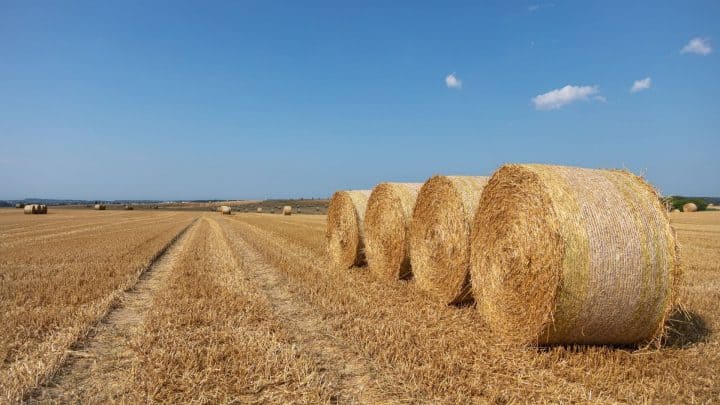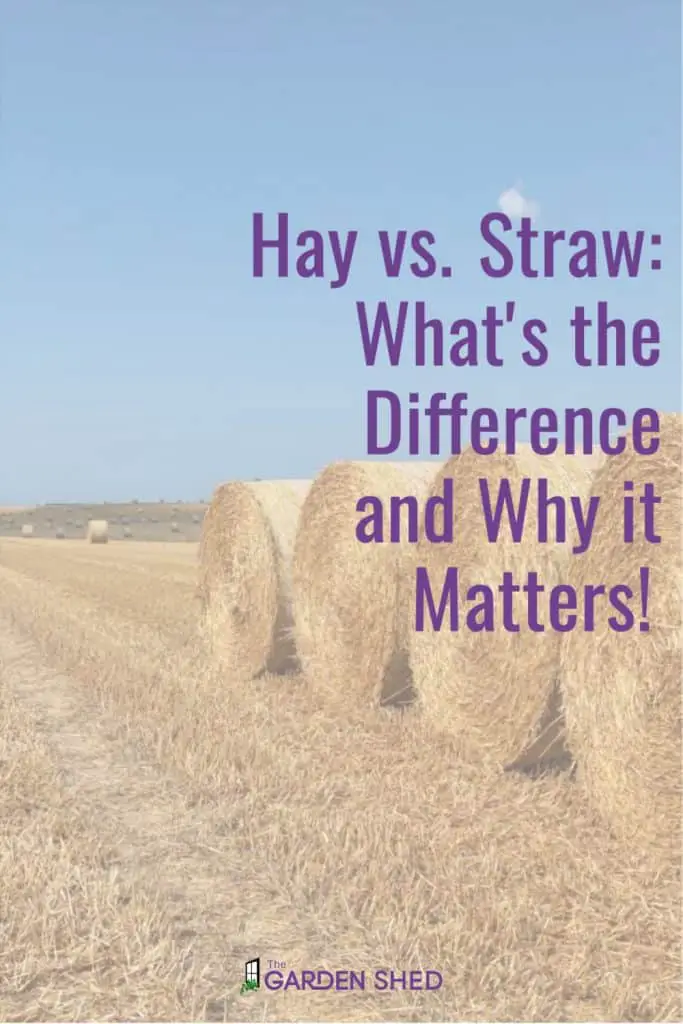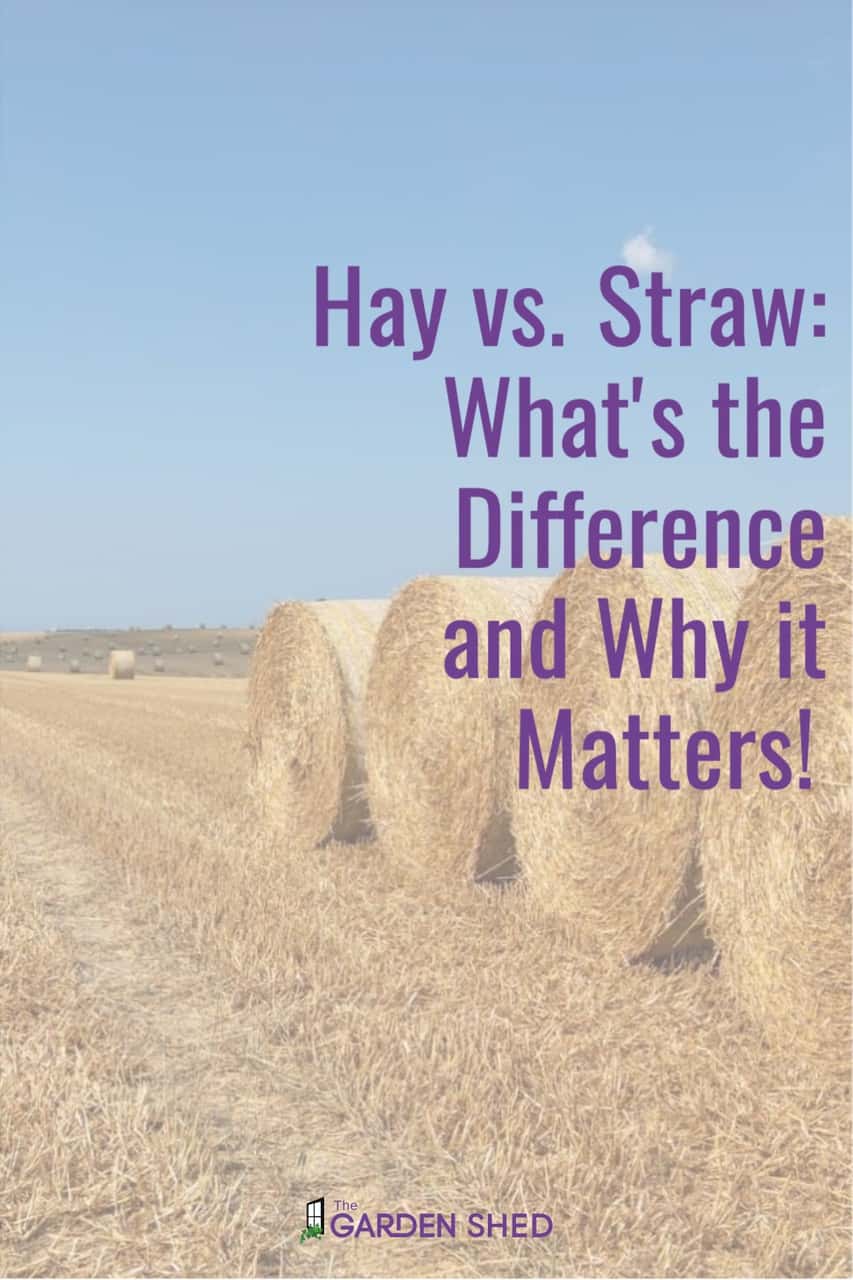Hay vs. Straw – What’s the Difference and Why it Matters!

When it comes to the use of hay vs. straw in gardening, there is often quite a bit of confusion. A lot of gardeners think of hay and straw as the same thing, or at least close to the same thing, and think they can be used interchangeably. They are not and can not. Both hay and straw are available in bale form, which only adds to the confusion. Both are also useful in the garden, but there are some important differences between hay and straw.
What is Hay?
Hay is a crop cut and baled from plants and grasses such as timothy, clover, and alfalfa. When a farmer harvests hay, the entire plant is cut and branches, leaves, and seeds are visible. Hay is green in color and is heavy when compacted into a bale. It is cut from live plants, and then left to dry in the field before baling. Farming magazine tells us that it typically takes about three days for hay to dry in a field. Therefore, the saying about “making hay while the sun shines” makes total sense. The hay needs three sunny days to dry before baling. Baling wet hay can cause the hay to mold or even, oddly enough, create spontaneous combustion. The AIMS website tells us hay stored with over 22% moisture is in increased danger of spontaneous combustion. But, that’s another story. Back to hay vs. straw.
What is Straw?
Straw is a byproduct of a grain harvest such as wheat and only the hollow stocks are used in a bale of straw. In other words, after the crop is harvested, the stems left behind are baled into straw. In comparison to hay vs. straw, straw has almost no nutritional value, is pale yellow in color, and is lightweight in bale form.
Common Uses of Hay vs. Straw
Hay
Hay is full of nutrition and is a food source for horses, cattle, and various other livestock. It is particularly useful in areas with cold winters where livestock does not have access to pasture. Since it is edible, hay is never a great choice for bedding.
Straw
Straw has little nutritional value. It works great as a mulch in gardens, to cover newly planted grass, and as bedding in horse stalls. Horses will not eat the straw, so it is an ideal choice for bedding. Straw bales are also common autumn decorations. Of course, straw is also great for stuffing scarecrows.
What is the Difference Between Hay vs. Straw in the Garden?
By far, straw is preferable to use as a mulch in the garden. These are the primary reasons:
Texture
Straw is less compact and fluffier than hay. It dries out quicker than hay when rained on, and is less likely to mold. This makes straw particularly good for covering new grass seed.
Cost and Availability
In most areas, hay is significantly more expensive than straw. Additionally, straw is commonly readily available in local garden centers.
Weed Content
Since hay is cut from a living plant, that means it includes seeds that can sprout in your garden. Hay is also likely to have a number of diverse plants in it, thus increasing your danger of those plants sprouting in your garden. The winner in the hay vs. straw battle is clear here. Straw wins.
Weight
Straw bales are much lighter in weight than hay so, as such, they are much easier to stack and carry around the garden.
Water Resistance
After a rain, straw dries out much quicker than hay. Wet straw is also less likely to develop mold than wet hay.
But What About Hay Rides?
Have you ever been on a hay ride? Chances are, even if you answered yes, you haven’t really been on a hay ride. You’ve been on a straw ride. Typically, a “hay” ride uses wagons full of straw. In this instance, it doesn’t matter whether you are sitting on a bale of hay or a bale of straw. In the garden, however, it does make a difference. Most often, in the garden, when it comes to hay vs. straw, straw is going to be the better choice.

Related posts:
- Flowering Herbs: 14 Great Ornamental Herbs
- Flowers That Attract Bees to Your Garden
- Affordable Ways to Remove a Tree Stump
